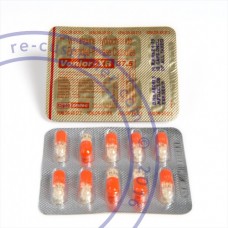
According to the World Health Organization statistics, nowadays psychological disorders are becoming an exceedingly serious problem: the number of people suffering from mental disorders is an average of 200-300 millions and this quantity is inexorably growing. Thus, the psychologists have faced with the task of researching the abnormal behavior and its differences from the norm.
Mental disorders, due to a multiplicity of reasons that cause them, are extremely diverse. These can be depression, psychomotor agitation and displays of alcoholic delirium, withdrawal symptoms, and various kinds of delusions, infringements of memory, hysterical attacks and more. Even doctors of different specialties find it difficult to understand the intricacies of the manifestations of these disorders. Thus only mental health professionals should provide medical assistance to the mentally ill.
Virtually every one of us goes through particular psychological disorders in certain periods of life. Ladies suffer from mental disorders 1.5-2 times more often than men. This trend is most noticeable in depression, anxiety, dissociative, conversion and other neurotic disorders, to a lesser extent — with organic brain lesions, dementia, elderly mental retardation, schizophrenia and psychosomatic diseases. Men, in their turn more likely than females suffer from alcoholism and other forms of substance dependence, personality disorders, epilepsy. Mental disturbances may begin at any age, i.e. be congenital or manifest itself during the first year of life (intellectual backwardness), commence in childhood, pubertal period and adolescence, youth), the middle of the life cycle and also in involution and senile periods.
How psychologists define what is normal and what is not? Essentially, they judge the behavior of a particular person, taking into account deviations from statistical norms, lack of compliance with broadly accepted social norms and deviations from absolute standards, defining what it means to be «healthy» and «good». Let us review each of these criteria.
Methods for determining the normality:
- The simplest approach to distinguish «normal» from «abnormal» lies in determining how majority of people behave. Then abnormal is something substantially different from the average statistic. Consider someone who feels anxious after starting a new job. Since most people experience concerned in stressful situations, similar to this, the therapists believe, that this pattern of behavior is normal. High degree of concern or lack thereof might indicate a deviation from the norm. Of course, this method does not provide 100 percent accuracy. Suppose a recently widowed woman tells you that she has heard her deceased husband talking to her. You can assume that it is a very unusual behavior and it should be classified as abnormal; but that assumption would be wrong. In fact, 50-90% surveyed, who have recently widowed, are experiencing hallucinations. Therefore, the behavior that seems abnormal is not such a statistical rarity.
- Another way to determine abnormality - compare human behavior with the behavior expected by society. A woman who walks around the neighborhood, dressed in a heavy coat in summer and shouts insults at passers-by, according to this criterion, will be recognized as abnormal. She violates public rules relating to clothes and behavior.
But even taken together, these two criteria are not are always sufficient.
Sometimes the behavior that is statistically infrequent and that violates social norms should not be regarded as abnormal. For example, three decades ago a divorced father wanted to be the guardian of his young children. At that time his position was quite sparse, and contradicted the social standards but today there are very few people who would call him deranged. Much of the energy of society lies in those people who dare to speak out against the rules and go in new directions. Stick a label «abnormal» for such actions would mean the rejection of innovation.
Mental health means having the ability to adapt well to human environments, especially social, and the state of mental, psychological and social prosperity. For modern psychiatry is typical a formal principle according to which any person is mentally healthy, until proven otherwise. To establish an accurate diagnosis the doctor must conduct a conversation with a patient during which oversees his or her response and answers to topical issues. It is important as well to perform a thorough and complete physical examination of the patient. Only after the detection of a set of symptoms can be diagnosed any mental disorder.
In modern medical psychology for the diagnosis have been widely used specially developed psychological diagnostic tests.
Because very often the reason of mental disorders are infectious diseases of various kinds (meningitis or encephalitis, etc.), mental illness prevention is aimed at prevention infectious diseases. Similarly to that, preventive maintenance includes methods for the prevention of various injuries and poisoning.
Treating of mental illness carries a doctor - a psychiatrist, psychologist or psychotherapist.
There are several methods of treatment. One of the most widespread methods is medicament therapy. Depending on the diagnosis can be used such types of drugs: antidepressants, antipsychotics, stimulants, tranquilizers, mood stabilizers, and nootropic drugs.
The second method of treatment is a shock therapy. This includes such activities as electroconvulsive therapy and insulin shocks.
Psychotherapy - another method of treatment. This is a non-pharmacological impact on the psyche of the patient. This method lies in helping people to adapt to society, to normalize their own perception and reality acceptance.
Depending on the patient, the degree of his or her illness, treatment can be stationary or outpatient.
Mental Disorders Pharmacies
| Pharmacy | Rating |
| RX2040.COM | ★★★★★ 5/5 |
| RXShipFree.COM | ★★★★★ 5/5 |
| TheWorldsPharma.COM | ★★★★★ 5/5 |
| LightPharmacyPills.COM | ★★★★★ 5/5 |


















